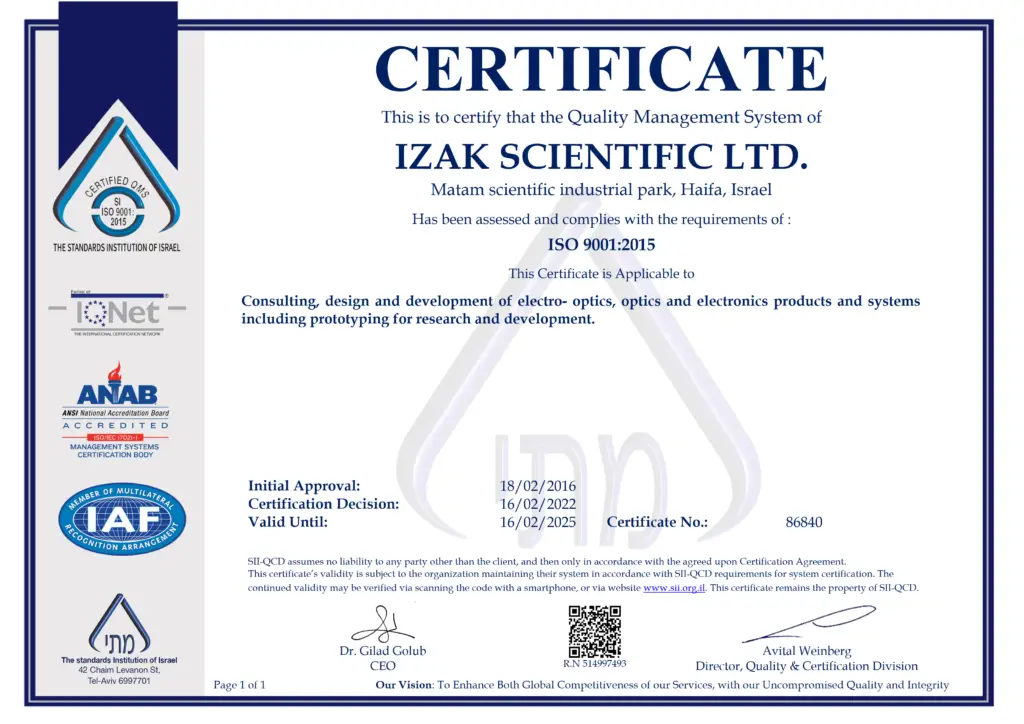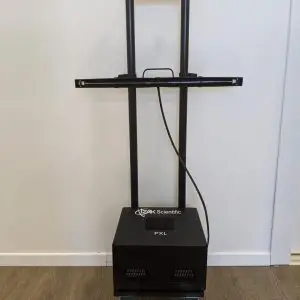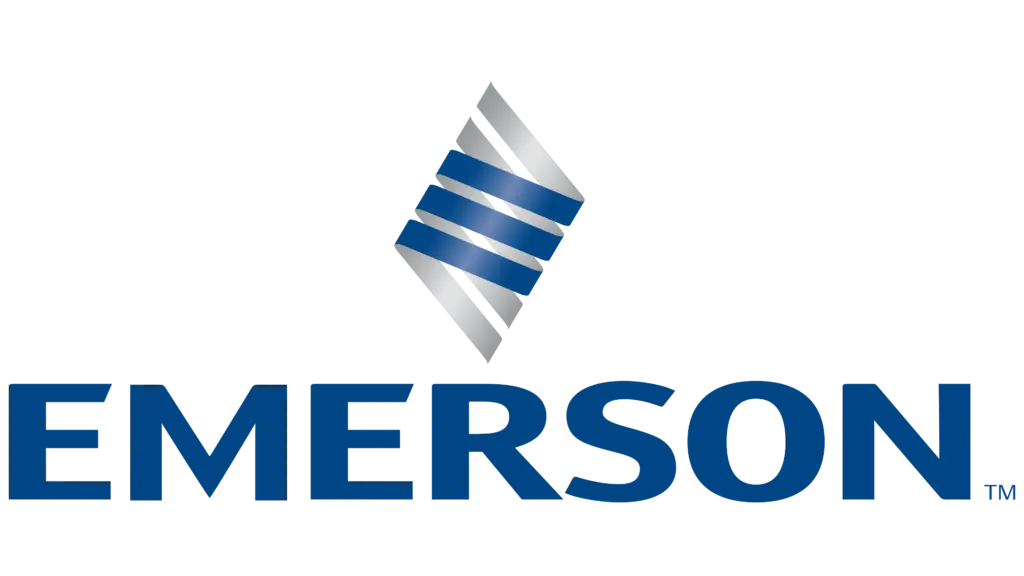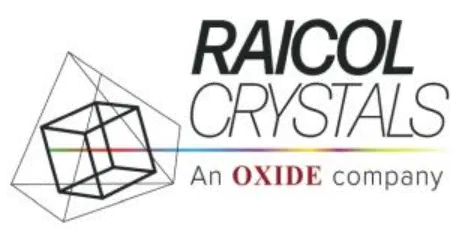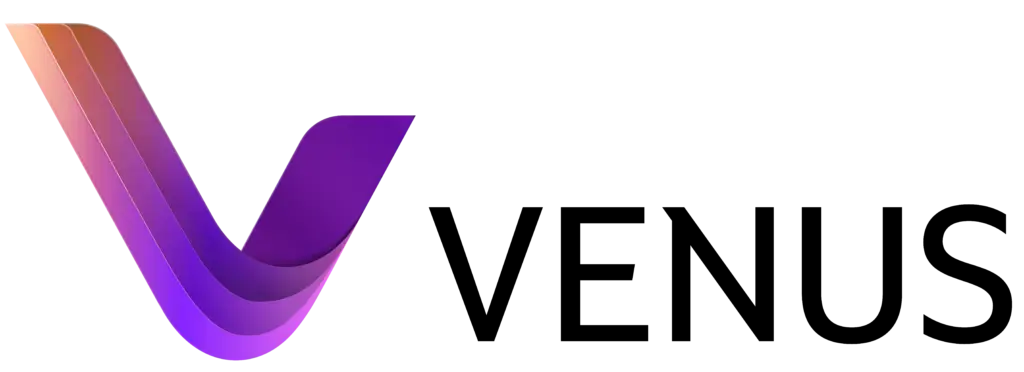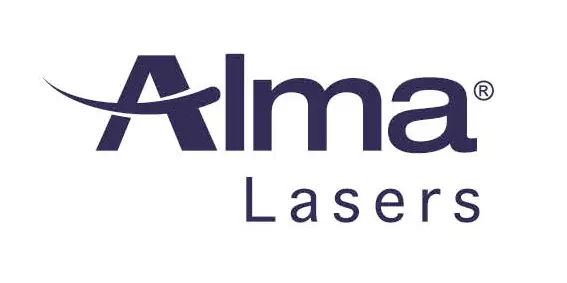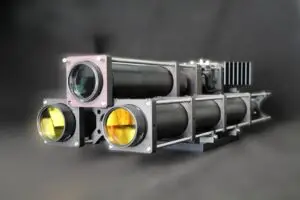Optical System Design refers to the process of planning, creating, and optimizing systems that manipulate light to achieve a specific function or purpose. This field encompasses a wide range of applications, from simple lenses and mirrors to complex assemblies found in cameras, telescopes, microscopes, and fiber optic communication systems. Here are several fundamental elements of optical system design, accompanied by example projects that have been optically conceptualized, designed, executed, and evaluated by IZAK Scientific:
1. Objective Identification: The first step in designing an optical system is to define its purpose. This could be to focus light, form an image, disperse light into a spectrum, transmit information, or manipulate light in other ways.
One exemplary project in optical design involves the coupling of light into a spectrometer slit for the purpose of spectral analysis. This project, undertaken by IZAK Scientific, showcases the intricate process of directing and focusing light into a narrow slit of a spectrometer, a critical step for accurate and efficient spectral analysis.
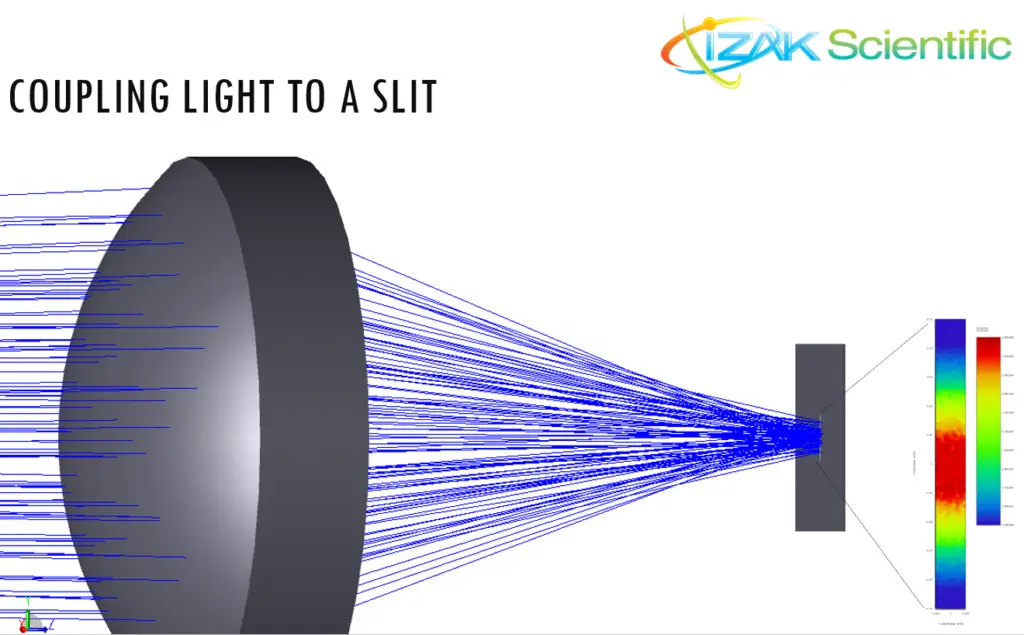
2. Selection of Optical Components: Depending on the system’s purpose, various optical components such as lenses, mirrors, prisms, gratings, and fiber optics are selected. Each component has specific properties and contributes to the overall functionality of the system.
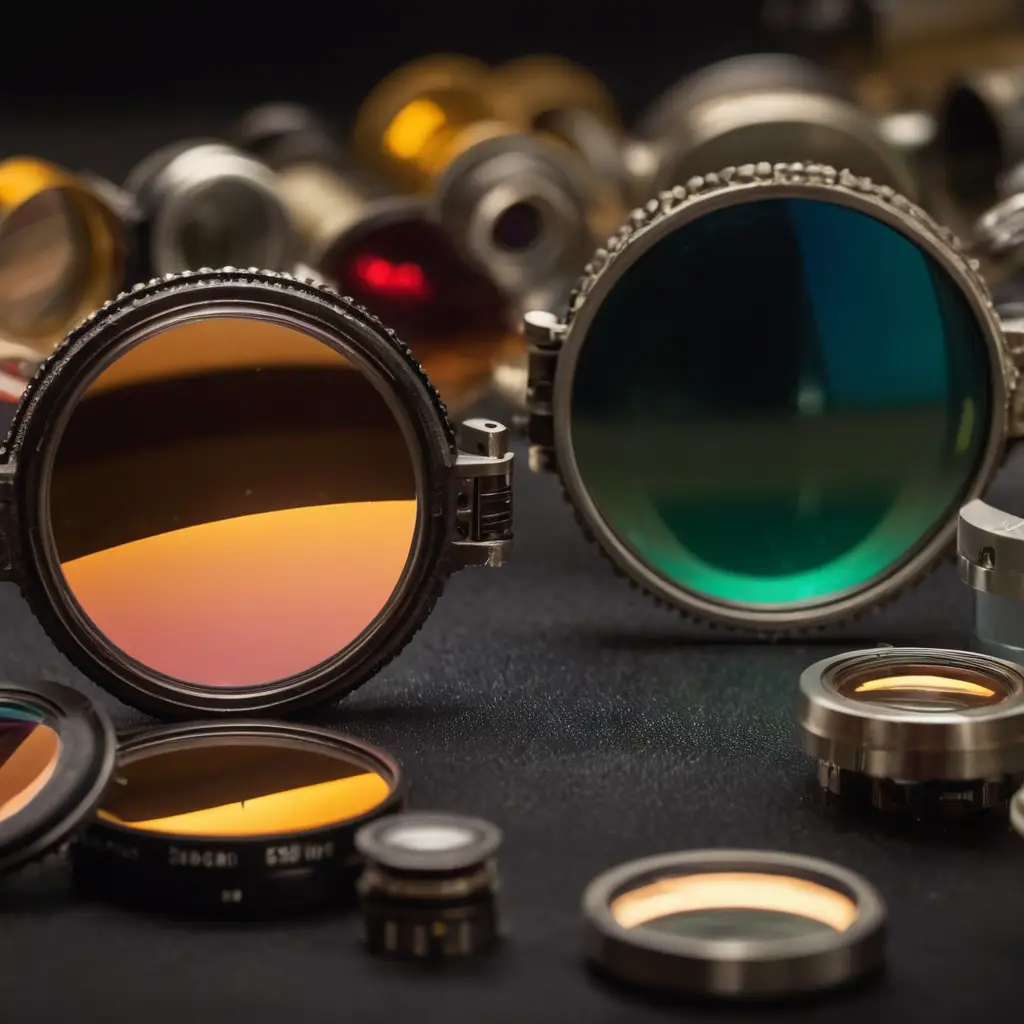
3. Light Behaviour Analysis: Understanding how light interacts with these components is crucial. This includes studying refraction, reflection, diffraction, absorption, and dispersion of light.
A notable project in optical design is the delivery of light through an optical fiber, specifically focusing on the efficient coupling of light into the fiber. In this scenario, the behavior of light is heavily influenced by the numerical aperture of the light beam, which is crucial for effective light coupling into the optical fiber. This project encompasses various aspects such as the optical output from the fiber, fiber transmission, and other related parameters, demonstrating the complexity and precision required in such optical system designs. In the image below a design example project of coupling, decoupling, and sampling light from/to optical fiber examples
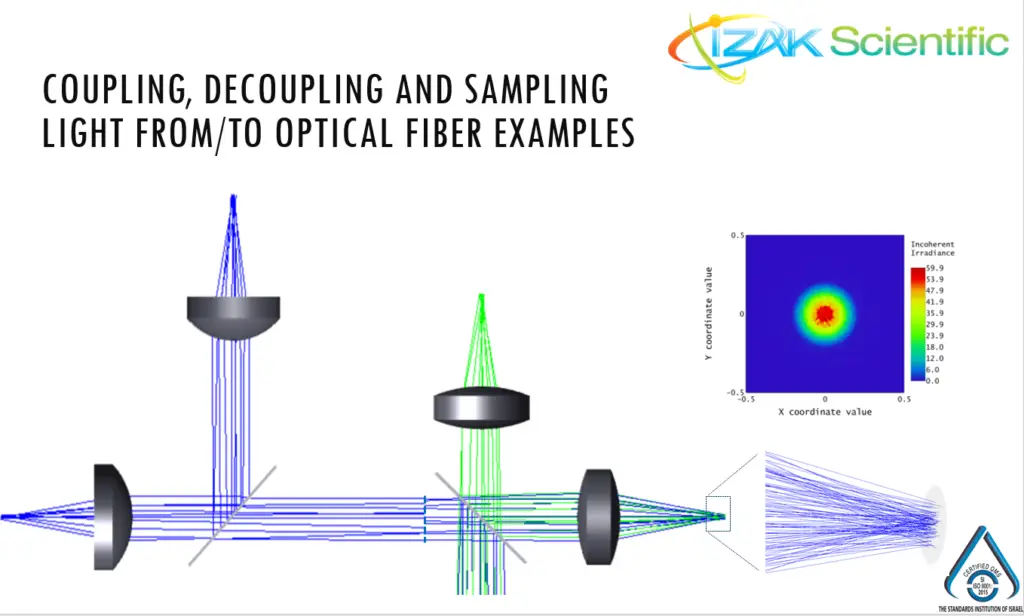
4. Optical Layout Design: as part of the optical system design we create a layout of how the optical components will be arranged to achieve the desired outcome. This involves determining the physical parameters like focal length, aperture size, field of view, and the physical placement of each element.
At IZAK Scientific, one of our optical system design projects involved creating an LED Field of View (FOV) reducer. This project represents an economical approach to utilizing LEDs as light sources for optical analysis. One of the primary challenges in such a project is adhering to a low-cost Bill of Materials (BOM) while ensuring the robustness of the optical system. To address this, we developed an aspheric lens from scratch, tailored specifically to match the optical properties of the chosen LED chip. Our design focused on achieving the optimal beam focus and depth of focus, ensuring maximum possible irradiance at the designated light position for analysis and all in a mold aspheric lens to maintain low cost BOM. This project exemplifies our commitment to delivering cost-effective yet high-performing optical solutions.

5. Performance Simulation and Optimization: Using optical design software, designers simulate the system to predict how it will perform. They analyze aspects like image quality, aberrations, and light efficiency. Based on simulation results, the design is tweaked to optimize performance.
It’s important to remember that optical design software, primarily based on geometrical optics principles, is a tool that doesn’t encompass all aspects of optical design. This means that while such software is invaluable for simulations and preliminary designs, an optical designer should not rely solely on these simulations. Practical considerations, physical phenomena that may not be fully captured by the software, and real-world testing are crucial to ensure the comprehensive performance and reliability of the designed optical systems. This approach underscores the importance of a balanced combination of simulation and empirical methods in the field of optical design.
6. Mechanical Integration: Optical components need to be housed in a mechanical structure that provides stability and alignment. This integration requires precision to ensure that the optical components function as intended.
In fact, when integrating optical design with mechanical aspects, the implementation encounters real-world factors like precision, tolerances, mass, thermal expansion, dn/dT (opto-mechanical properties), and chemical and environmental influences. During the tolerancing process, it’s essential to ensure lens designs are practical and economically feasible to construct. This process typically involves adjusting tolerances in a way that might compromise optical performance, hence it needs careful consideration to maintain a balance between practicality and performance.
7. Prototyping and Testing: A prototype is built and tested to verify that the system meets the design specifications. This phase often involves iterative adjustments to fine-tune the system.
To guarantee that the system functions as intended, a test procedure is necessary. Identifying issues early in the process is ideal, as it helps reduce both time and expenses.
In our projects at IZAK Scientific, we strongly advocate for the construction of a prototype and conducting tests at the earliest opportunity. Our approach heavily relies on utilizing off-the-shelf components, enabling us to deliver a functional prototype rapidly. This is a crucial part of our design process, allowing for prompt testing and iteration.
For instance, we have designed numerous systems where lasers are used as a light source, and uniform illumination is a critical requirement. The solution varies significantly depending on the type of laser employed. For example, in the case of a laser diode, the beam is characterized by a short axis and a fast axis due to diffraction, a feature that is markedly different from what you would find in solid-state lasers or fiber lasers.
In such scenarios, we often propose a rapid prototype to evaluate the optical solution designed as part of our optical design process. This approach allows for a practical assessment of the proposed design in a real-world context. We provide a comprehensive opto-mechanical layout, utilizing off-the-shelf components, to facilitate concept testing. This method enables us to validate the feasibility and effectiveness of the design before moving forward with more advanced stages of development.
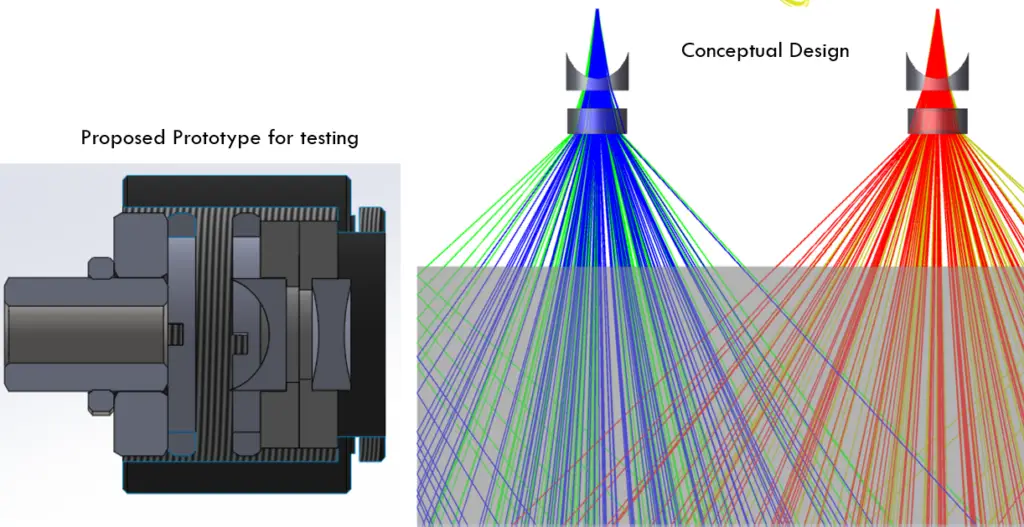
8. Manufacturing and Assembly: Following successful design and prototype testing, the optical system proceeds to the production stage. It is crucial at this point to preserve the precision and quality that were achieved in the prototype.
For instance, variations in production batches of mechanical mounts or optical components, rather than maintaining nominal performance, can introduce issues like tilt, decentering, axial spacing errors, among others. At IZAK Scientific, we advise our clients to implement testing equipment to ensure that the optical performance remains consistent throughout long-term production. This step is vital to maintain the integrity and reliability of the optical systems over time.
One example of the testing equipment we’ve developed for a customer involves a setup for evaluating a laser system along with its accompanying optics. In this particular case, the test jig is designed to measure the output beam of a 10.6µm wavelength CO2 laser that is integrated with coupling optics. The key challenge here is the high cost associated with standard beam profilers for such specific applications.
To address this, we developed a unique beam profiler that is adaptable to any imager. In second phase the beam profiler application was specifically tailored for the customer, equipped with optics suitable for the Long Wave Infrared (LWIR) spectral range of 8µm to 12µm. By creating a beam profiler that is both versatile and cost-effective, we were able to provide a tailored solution that met the specific requirements of our customer’s laser system, ensuring accurate measurement and testing of the laser output within the desired wavelength range. More information about IZAK laser beam profiler.

9. Application-Specific Considerations: Different applications impose specific requirements on the optical system. For instance, a telescope needs a design that maximizes light gathering and resolution, while a fiber optic system focuses on efficient light transmission over distances.
An illustrative project in telescope optical design within our portfolio at IZAK Scientific is our Multi-Channel Spectro Radiometer design. This project involved the design and implementation of three distinct telescopes, each tailored to a different spectral range and sensor type. One telescope is paired with a fast single pixel detector, while another is designed to work with a spectrometer, demonstrating our capability to adapt and specialize optical systems to meet varied and specific requirements in terms of spectral range and detection technology.
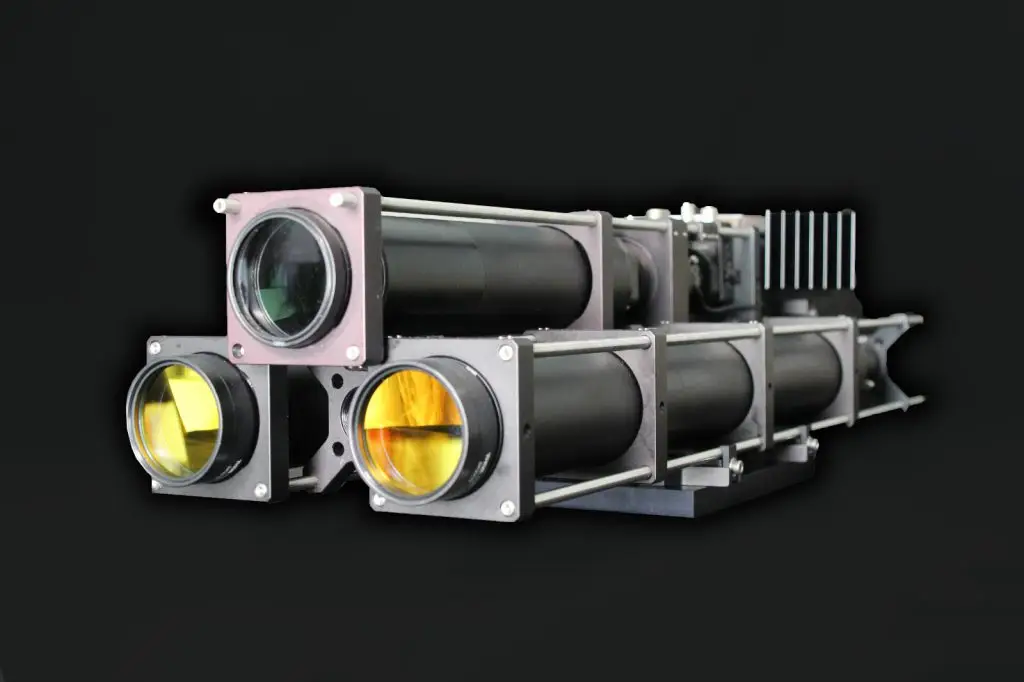
10. Compliance with Standards: The design must comply with industry standards and regulations, especially for optical systems used in medical, military, or communication applications.
IZAK Scientific has been assessed and complies with the requirements of ISO9001:2015, and certified for consulting, design and development of electro-optics, optics and electronics products and systems, including prototyping for research and development.
Optical system design is an inherently interdisciplinary field, encompassing physics, engineering, material science, and often incorporating elements of electronics and software. This amalgamation of disciplines is essential in crafting systems that address a wide array of technological needs.
At IZAK Scientific, we are not only equipped to design optical systems but also to provide solutions tailored to your specific requirements. Our optical design team boasts decades of demonstrated excellence, with a comprehensive understanding of all facets involved in successful optical system design, as briefly outlined above. Our hands-on experience ensures that the optical systems we design not only perform well in simulations but also excel in real-world applications. We pay meticulous attention to integrating the optical design into the 3D CAD model (or SolidWorks model) along with all necessary system tolerances.
We invite you to contact us today for a consultation, and let our expertise guide your project to success.
We invite you to conatct us. today for a consultation, and let our expertise guide your project to success
